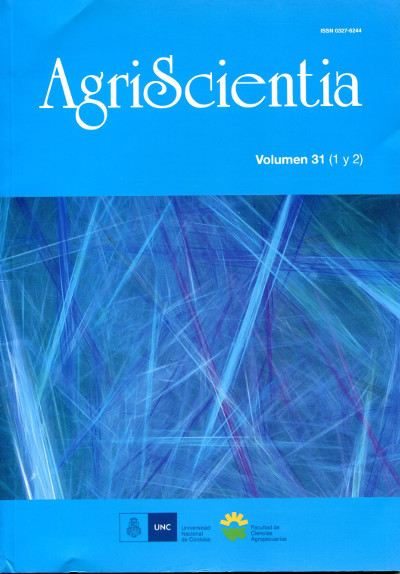Characterization of Capsicum germplasm collected in Northwestern Argentina based on morphological and quality traits
Main Article Content
Abstract
Paprika production is concentrated in Northwestern Argentina, where around 1500 ha are annually grown. Farmers mainly from Andean valleys, maintain their local landraces or "criollas" under different environmental conditions, using their farming traditions and selection criteria. These traditional varieties represent valuable genetic resources for conservation and selection of agronomical and quality traits. Between 2005 and 2007 eight collecting trips were made to Northwestern Argentina in order to recover local germplasm. As a result, five hundred new vegetable seed samples have been incorporated into the Germplasm Bank. Among these accessions 32 belong to Capsicum, the majority for paprika production, that were evaluated in field conditions using a randomized block design with three repetitions of eight plants per accession; 54 morphological and agronomical traits were measured during two production cycles. Multivariate analyses determine three groups, where fruit characters were the most efficient for accession differentiation. Accessions suitable for paprika production were further examined, and variability for fruit pungency and color was found. Promising accessions were selected for ex situ conservation and breeding purposes.
Downloads
Download data is not yet available.
Article Details
How to Cite
Occhiuto, P., Peralta, I., Asprelli, P., & Galmarini, C. (2014). Characterization of Capsicum germplasm collected in Northwestern Argentina based on morphological and quality traits. AgriScientia, 31(2), 63–73. https://doi.org/10.31047/1668.298x.v31.n2.16530
Issue
Section
Articles





